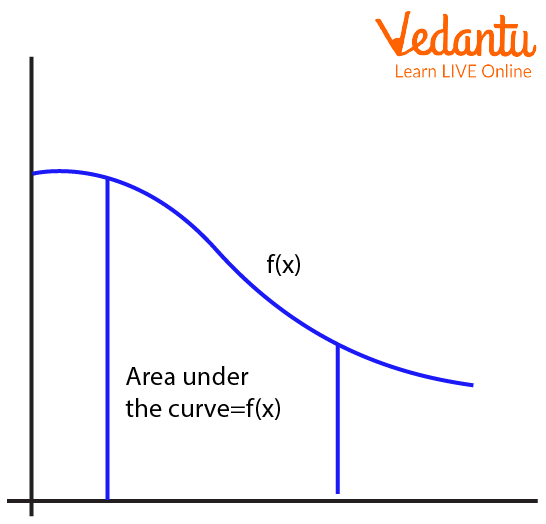




How to Apply the Second Fundamental Theorem of Calculus in Problem Solving
The Second Fundamental Theorem of Calculus is used to show the relationship that differentiation and integration operations in Mathematics are inverse of each other. The fundamental theorem of calculus has a rich history. However, the most important names associated with the theorem are Isaac Newton and Gottfried Leibniz. The notations used today are given by Gottfried Leibniz. We will discuss about the Second Fundamental Theorem of Calculus proof and Second Fundamental Theorem Of Calculus examples for better understanding and clarity of the topic.
History of Gottfried Leibniz

Gottfried Leibnitz
Name: Gottfried Leibniz
Born: 1 July 1646
Died: 14 November 1716
Field: Mathematics
Nationality: German
Statement of Second Fundamental Theorem of Calculus
According to the Second Fundamental Theorem of Calculus, the differentiation of an antiderivative function results in original functions.
Mathematically, consider a function $f(x)$ defined over limits
$\dfrac{d}{d x}\left[\int_{a}^{x} f(t) \cdot d t\right]=f(x)$
Second Fundamental Theorem of Calculus Proof

Proof of the Second Fundamental Theorem
The proof includes three steps.
Integrate the given function $f(t)$.
Apply the upper and lower bounds of integration.
Differentiate the obtained expression to finally get the initial function back.
$\dfrac{d}{d x}\left[\int_{a}^{x} f(t) \cdot d t\right]=\dfrac{d}{d x}[F(t)]_{a}^{x} \\$
$\Rightarrow \dfrac{d}{d x}[F(x)-F(a)]=f(x)$
The value of integration of $f(t)$ is $F(t)$.
Now, apply the upper bound limit of $x$ and the lower bound limit of $a$ for the function $F(x)$.
We will get,
$\Rightarrow F(x)-F(a)$ .
The derivation of $F(x)$ is equal to $f(x)$, which is the original function.
Hence the proof of the Second Fundamental Theorem of Calculus.
Limitations of the Second Fundamental Theorem of Calculus
The function being continuous is a vital condition. The theorem is not applicable in the case of non-continuous functions.
The second Fundamental Theorem of Calculus doesn't tell anything about antiderivatives as infinite antiderivatives are corresponding to different arbitrary constants.
Applications of the Second Fundamental Theorem of Calculus
The second Fundamental Theorem of Calculus is used to relate the fundamental elements of calculus, i.e., integration and differentiation.
It is used for some complex differentiation which will not be possible without using this theorem.
Second Fundamental Theorem of Calculus Examples
1. Find the differentiation of the anti-derivative of the function $\dfrac{1}{x}$ across the limits $x$ and $5$.
Ans: The given function is $f(x)=\dfrac{1}{x}$.
Let us find the antiderivative of this function across the limits from $x$ and $5$
$\int_{5}^{x} \dfrac{1}{x} \cdot d x=[\log x]_{5}^{x}$
$\Rightarrow \log x-\log 5$
Now, differentiating the obtained expression.
$\dfrac{d}{d x} \cdot(\log x-\log 5)=\dfrac{1}{x}-0$
$\Rightarrow \dfrac{1}{x}$
Using the second fundamental theorem of calculus,
$\Rightarrow \dfrac{d}{d x} \int_{5}^{x} \dfrac{1}{x}=\dfrac{1}{x}$
Therefore, the differentiation of the anti-derivative of the function $\dfrac{1}{x}$ is $\dfrac{1}{x}$.
2. Prove that the differentiation of the anti-derivative of the function cosx will give the same function.
Ans: The given function is $f(x)=\cos x$
The integration of $\cos x$ is equal to the function $\sin x$.
$\int \cos x \cdot d x=\sin x+C$
Now, differentiating $\sin x+C$,
$\Rightarrow \dfrac{d}{d x}(\sin x+C)=\cos x$
So,
$\Rightarrow \dfrac{d}{d x} \int \cos x d x=\cos x$
3. Find the value of the integral \[\int_{-1}^3\left(x^2-3\right) d x\] using the fundamental theorem of calculus.
Ans: Using FTC 2, \[\int_{a}^b f(x) d x=F(b)-F(a)\] where \[F(x)=\int f(x) d x\].
So, first, we will evaluate the indefinite integral \[\int\left(x^2-3\right) d x\].
\[\int\left(x^2-3\right) d x=\int\left(x^2\right) d x-\int 3 d x \]
\[=\dfrac{x^3}{3}-3 x+C \quad\left(\because \int x^n d x=\dfrac{x^{n+1}}{(n+1)}+C\right) \]
\[=F(x)\]
BY FTC 2,
\[\int_{-1}^3\left(x^2-3\right) d x=\dfrac{x^3}{3}-3 x+C \]
\[=\left[\dfrac{3^3}{3}-3(3)\right]-\left[\dfrac{(-1)^3}{3}-3(-1)\right] \]
\[=9-9+\dfrac{1}{3}-3 \]
\[=-\dfrac{8}{3}\]
Important Formulas to Remember
For a continuous function $f(x)$, we have $\dfrac{d}{d x}\left[\int_{a}^{x} f(t) \cdot d t\right]=f(x)$.
Important Points to Remember
Integration and differentiation are related to each other with the help of the Second Fundamental Theorem of Calculus.
There are a total of three fundamental theorems of calculus.
Conclusion
In the article, we have discussed the detailed proof of the Second Fundamental Theorem of Calculus and its applications. The theorem is quite fundamental in its sense and hence named so. The novel thing about the theorem is the way it connects two different fundamental tools with a relation. This theorem is the backbone of calculus.
FAQs on Second Fundamental Theorem of Calculus Explained
1. What is the statement of the Second Fundamental Theorem of Calculus as per the CBSE Class 12 Maths syllabus?
The Second Fundamental Theorem of Calculus states that if f(x) is a continuous function on an interval and F(x) is its antiderivative, then the derivative of the definite integral of f(x) from a constant a to variable x is given by:
- \(\frac{d}{dx}\left[\int_{a}^{x} f(t)dt\right] = f(x) \)
2. How can the Second Fundamental Theorem of Calculus be used to solve board exam questions involving definite integrals?
To apply the Second Fundamental Theorem of Calculus in CBSE board exam questions, follow these steps:
- Identify the function f(t) within the integral.
- Integrate f(t) to get its antiderivative F(x).
- Apply the limits as required.
- If differentiation is asked, directly use the theorem: \(\frac{d}{dx}\left[\int_{a}^{x} f(t)dt\right]=f(x)\).
3. Why is continuity of the function important in applying the Second Fundamental Theorem of Calculus?
Continuity of the function f(x) on the given interval is essential because the Second Fundamental Theorem of Calculus guarantees the result only when f(x) is continuous. If f(x) is not continuous, the integral might not depend smoothly on x, and the differentiation process can break down, leading to incorrect conclusions on exams.
4. What is the difference between the First and Second Fundamental Theorem of Calculus in the context of board exams?
The First Fundamental Theorem of Calculus provides a method to evaluate definite integrals using antiderivatives: \( \int_{a}^{b} f(x) dx = F(b) - F(a) \). The Second Fundamental Theorem shows that taking the derivative of the integral with a variable upper limit gives back the original function: \( \frac{d}{dx} \left[ \int_{a}^{x} f(t) dt \right] = f(x) \). In CBSE exams, students are often asked to apply both theorems to different types of integration and differentiation problems.
5. Can the Second Fundamental Theorem of Calculus be applied if the lower limit of the integral is a function of x?
Yes, if the limits of integration are functions of x, the Leibniz rule or generalized form is used. For an integral of the form \( \int_{u(x)}^{v(x)} f(t) dt \), differentiating with respect to x gives:
- \( f(v(x)) \cdot v'(x) - f(u(x)) \cdot u'(x) \)
6. How does the Second Fundamental Theorem of Calculus support the reversibility of integration and differentiation?
The Second Fundamental Theorem of Calculus proves that integration and differentiation are inverse processes. When you integrate a function and then differentiate the result, you return to the original function, provided the function is continuous. This concept is fundamental to understanding calculus at the Class 12 level.
7. What steps should students follow to prove the Second Fundamental Theorem of Calculus in exams?
For a proof-based question in CBSE exams:
- Let F(x) be the antiderivative of f(x).
- Write \( \int_{a}^{x} f(t)dt = F(x) - F(a) \).
- Differentiate both sides with respect to x.
- State that \( \frac{d}{dx}F(x) = f(x) \), and since F(a) is constant, its derivative is zero.
- Conclude that \( \frac{d}{dx}\int_{a}^{x} f(t) dt = f(x) \).
8. What are some common mistakes or misconceptions students have about the Second Fundamental Theorem of Calculus?
Some common errors include:
- Applying the theorem when f(x) is not continuous.
- Forgetting to use the chain rule when the upper or lower limit is not just x but a function of x.
- Confusing the First and Second Fundamental Theorems.
- Not recognizing that integration and differentiation undo each other only under certain conditions.
9. How is the Second Fundamental Theorem of Calculus connected to other theorems such as Green’s and Stokes’ Theorem?
The Second Fundamental Theorem of Calculus is actually a one-dimensional case of broader theorems like Green’s and Stokes’ Theorem. While the Second Fundamental Theorem relates integration and differentiation in a single variable, Green’s and Stokes’ Theorems generalize this relationship to higher dimensions, forming the basis for various applications in Physics and Engineering beyond the CBSE 12th standard.
10. Why is the Second Fundamental Theorem of Calculus considered a backbone concept for board exams?
This theorem is fundamental because it connects two major branches of calculus: integration and differentiation. Many Class 12 board exam questions rely on this connection for evaluating definite integrals, solving application-based problems, and justifying conceptual steps. Mastery of this theorem simplifies various complex problems, making it a key scoring area in the CBSE Maths syllabus.
























